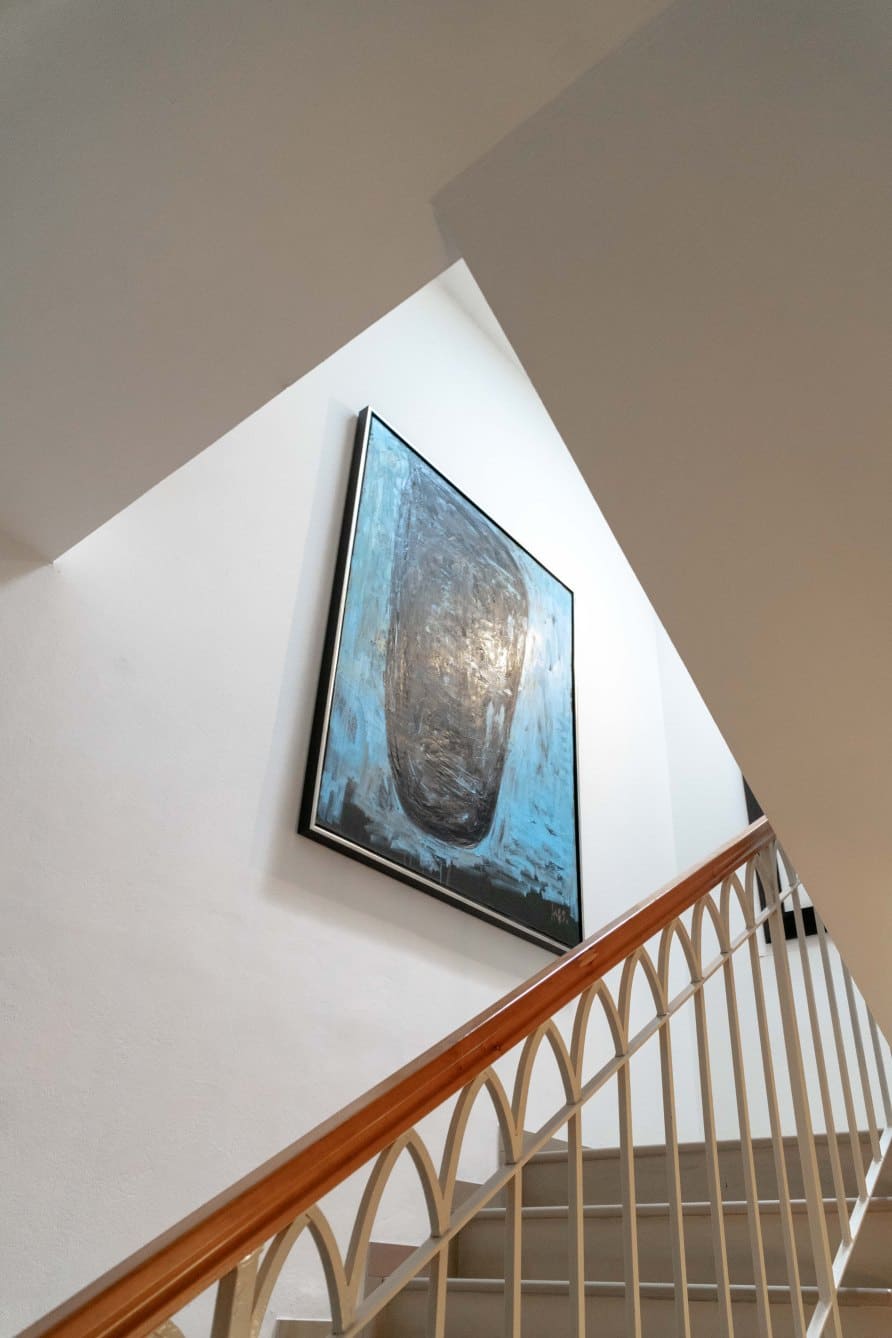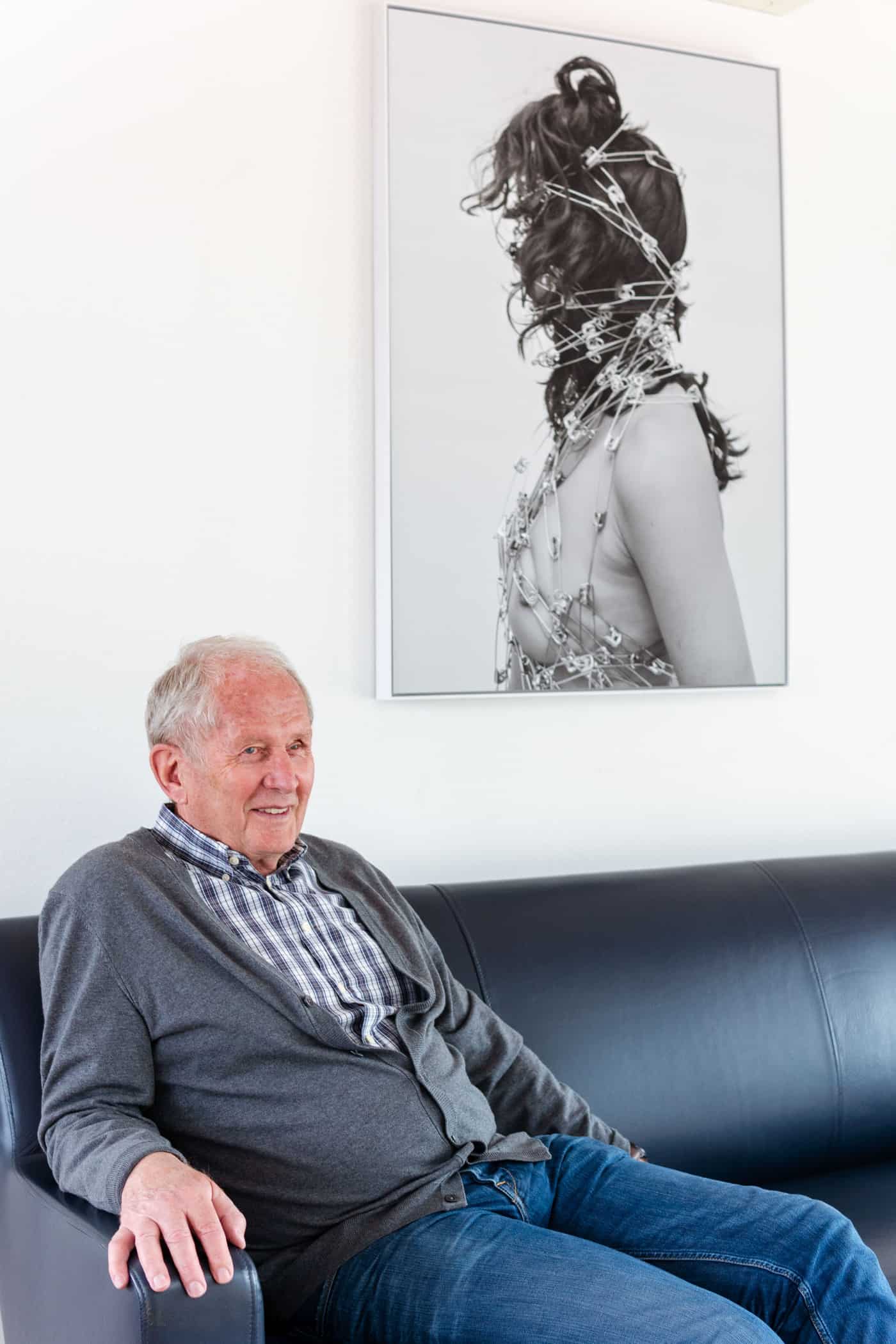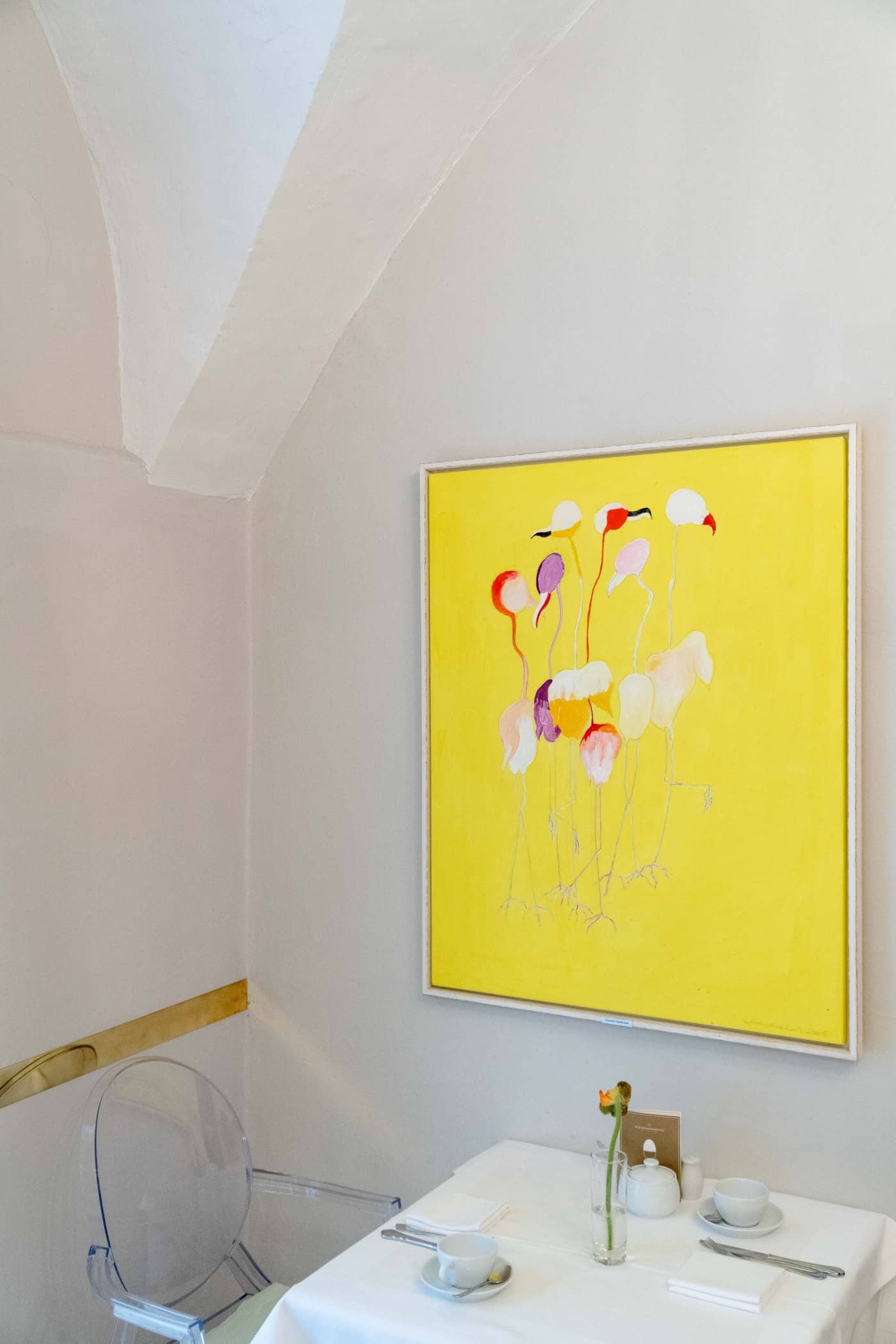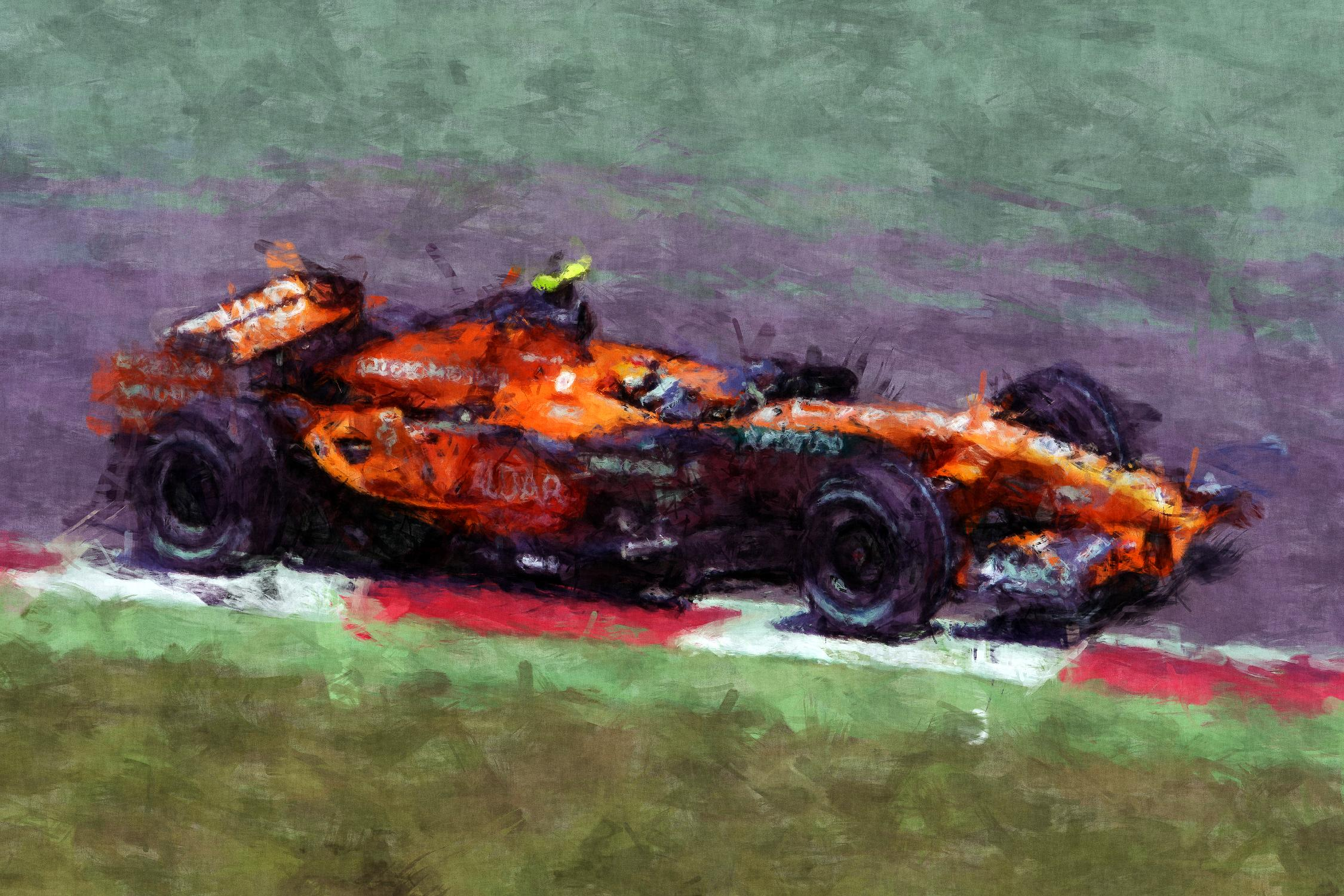
Speed and Stillness: Formula 1 Drivers and the World of Art
The Formula 1 night race in Singapore is unlike any other event. Downtown, the city transforms into a stage where speed and spectacle converge, the streets becoming a blur of light and precision (and, unfortunately, roadblocks). Yet, amid the intensity of the track, there is always a quieter question that creeps in between the laps: what do these racers do with all they accumulate?

The F1 circuit in SIngapore. Image courtesy of Autosport.
Lately, that question has sharpened into a story about priorities and taste. In a moment that startled the paddock and the galleries alike, Lewis Hamilton revealed he had sold his entire car collection and was turning his attention to art — keeping only the idea of the Ferrari F40 as something he might admire as an object of design. That admission sets the frame for a deeper conversation about figures in motorsport and how they might turn to art for both enjoyment and investment.
Lewis Hamilton’s career has been marked by records, championships, and a determination that extends beyond the track. His lifestyle once included an enviable collection of supercars: McLarens, Ferraris, and a custom Pagani Zonda 760 LH. Yet, by 2022, Hamilton spoke openly about letting them go. He admitted he rarely drove them, choosing instead to focus his wealth and attention on contemporary art.
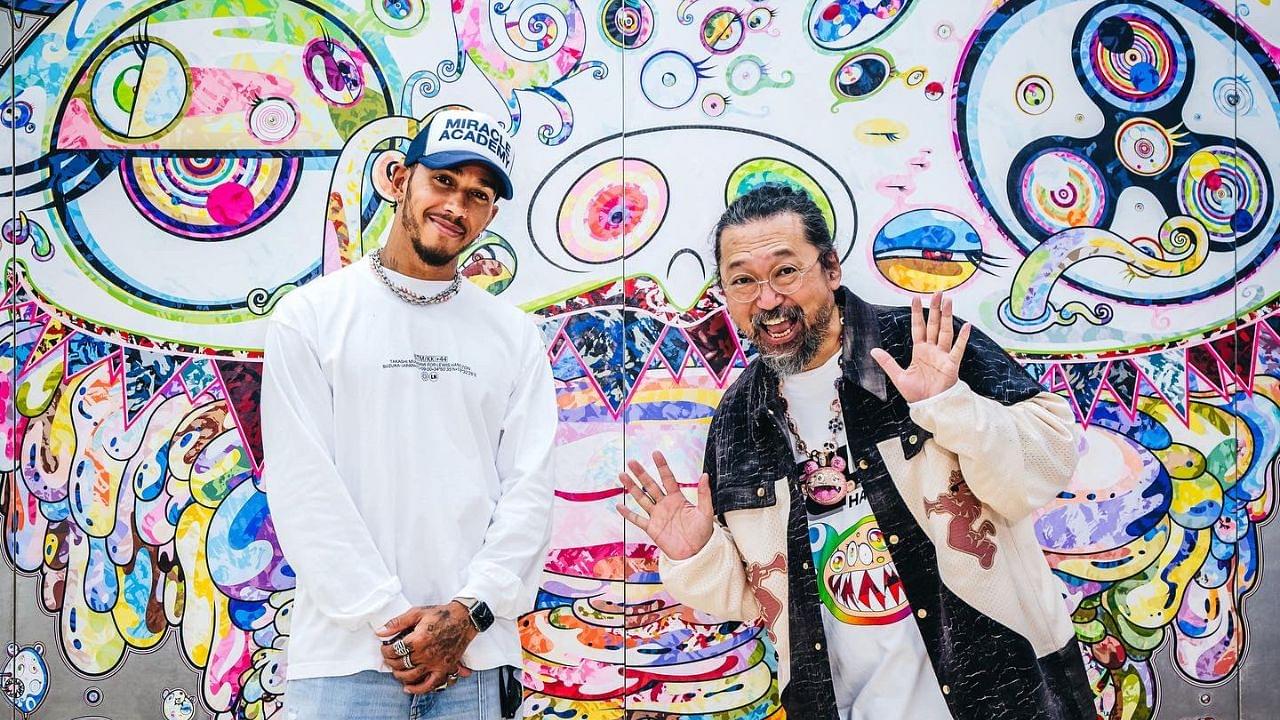
Hamilton with Takashi Murakami [1]. Image courtesy of The Sports Rush.
His collecting habits remain private, though Hamilton has admitted to paying special attention to art by Black artists. What matters is not the exact catalogue of what hangs on his walls, but the pivot itself.
Hamilton’s shift invites a wider reflection. He is not the first Formula 1 figure to gravitate toward art. Behind the helmets and racing suits, several figures across F1’s history have been serious collectors and patrons, each in their own way shaping how sport and culture intersect.
A Tradition of Collectors on the Grid
Helmut Marko
When I see a work of art – I buy it purely from the gut.
Others buy yachts – I buy art.
Helmut Marko
The Austrian former racing driver and current motorsport advisor at Red Bull Racing has cultivated an art collection that extends beyond mere decoration. His holdings are integrated into the fabric of his hospitality ventures [2] in Graz, Austria, where his hotels serve as both accommodations and showcases for contemporary art.
Marko's approach to collecting is deeply personal; he emphasises the importance of experiencing art in person, stating, "You have to see art, it has to live." This philosophy is evident in the curated displays within his establishments, where each piece contributes to a narrative that blends modern aesthetics with the dynamic energy of the racing world.
|
Art part of Marko's space. Image courtesy of Contemporary Lynx. |
Marko with art in his home. Image courtesy of Contemporary Lynx. |
Art part of Marko's space. Image courtesy of Contemporary Lynx. |
Through his personal collection and public endeavours, Helmut Marko demonstrates a profound understanding of art's power to transform spaces and influence perceptions. His approach to collecting is not about amassing valuable objects but about creating environments that inspire and provoke thought, reflecting his deep appreciation for the intersection of art, design, and life.
Sebastian Vettel
Sebastian Vettel, a four-time Formula 1 Champion, has an approach towards art collecting of homage and narrative. In 2016 he purchased an entire thirty-two-piece series produced by artist Mark Dickens in collaboration with photographer Keith Sutton [3] — a project that turns the pantheon of world champions into a textured archive.
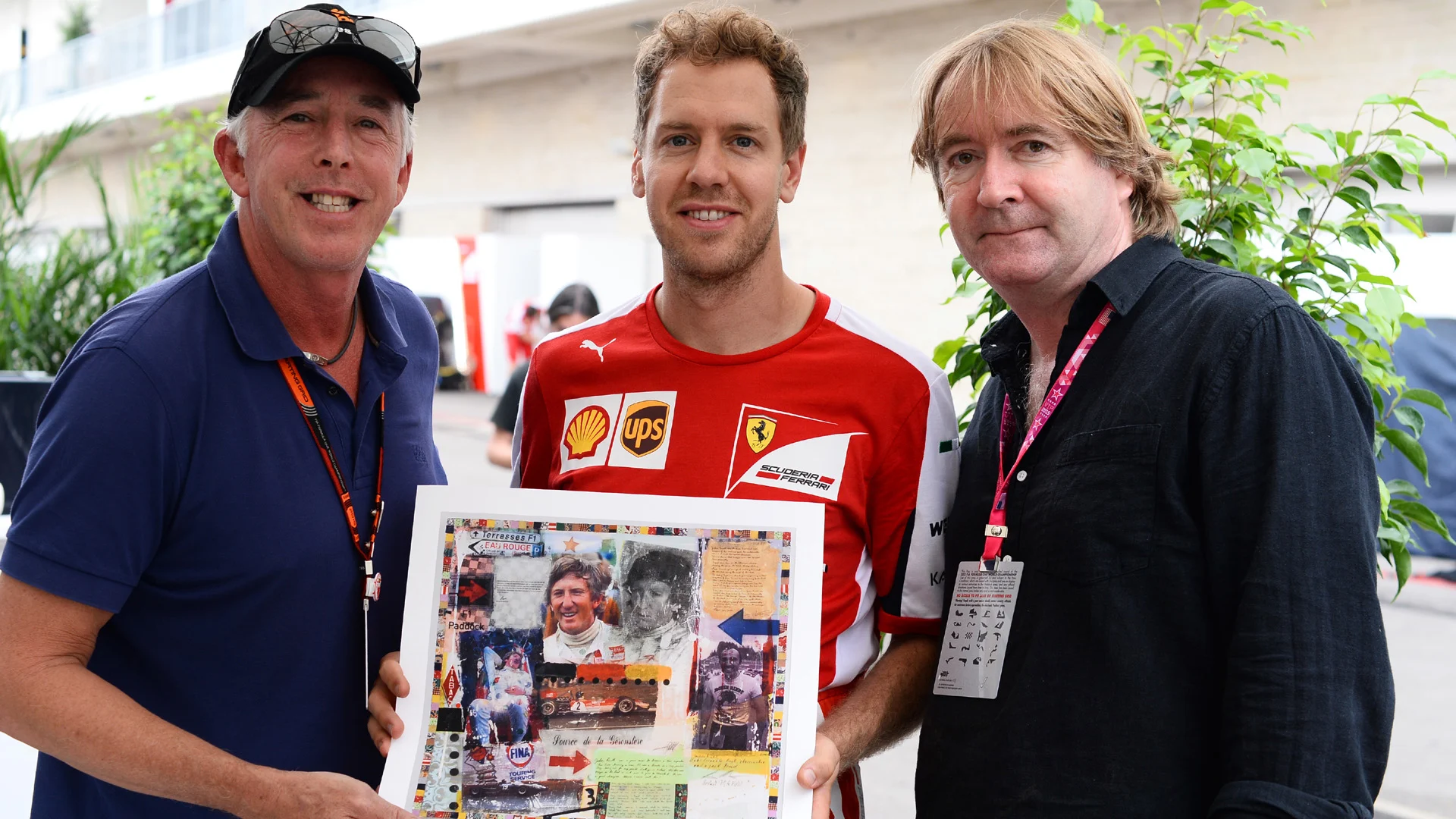
Vettel with the piece of art. Image courtesy of F1.
Each work in that suite is a complex object: photographic transfer, collage, paint, sometimes gold leaf. Vettel’s interest is instructive because it shows a collector drawn to layered meaning, his purchase signaling a desire to possess not merely an image of success, but a carefully constructed narrative artefact that speaks to lineage and legacy.
Bernie Ecclestone
The former supremo [4] of Formula 1 has engaged with art in ways that intertwine his passion for the sport with a broader cultural appetite. In 2021, he acquired a distinctive Ferrari-themed collection, consisting of 25 original artworks created by artist Mark Dickens in collaboration with renowned Formula 1 photographer Keith Sutton. Each piece features over 129 handwritten quotes from influential figures associated with Ferrari, including drivers, team principals, engineers, and fans, reflecting their personal connections to the brand.

Ecclestone’s interest is instructive: these acquisitions are not simply decorative but archival, embodying a narrative that celebrates both technical achievement and the mythology of racing. His approach signals a collector drawn to objects that fuse spectacle, history, and storytelling — a desire to preserve the drama of Formula 1 in forms that endure beyond the track.
Stefan Johansson
Drivers have become artists, too. Johansson, a Swedish F1 driver, has seamlessly transitioned from the racetrack to the canvas. His artistic journey began as a form of personal expression and has since evolved into a notable facet of his post-racing career. Johansson's artworks range from hyper-realistic portraits to abstract compositions, often inspired by his experiences in motorsport.
Part of the F1 2024 Collection. Image Courtesy of Stefan Johansson.
He draws direct connections between his racing background and his artistic endeavours, with some of his pieces reflecting the speed and precision inherent in both fields. His works are available as limited-edition prints, each accompanied by a certificate of authenticity, underscoring their value and his commitment to quality
Sport, Speed, and Stillness
The attraction of art for racing drivers might appear paradoxical. Their professional lives are built around adrenaline, risk, and engineering precision. Yet art offers another kind of intensity, one that is quiet rather than loud. A painting demands concentrated looking; a sculpture insists on space and presence. For collectors, art offers permanence in a way that a race, fleeting by nature, never can.
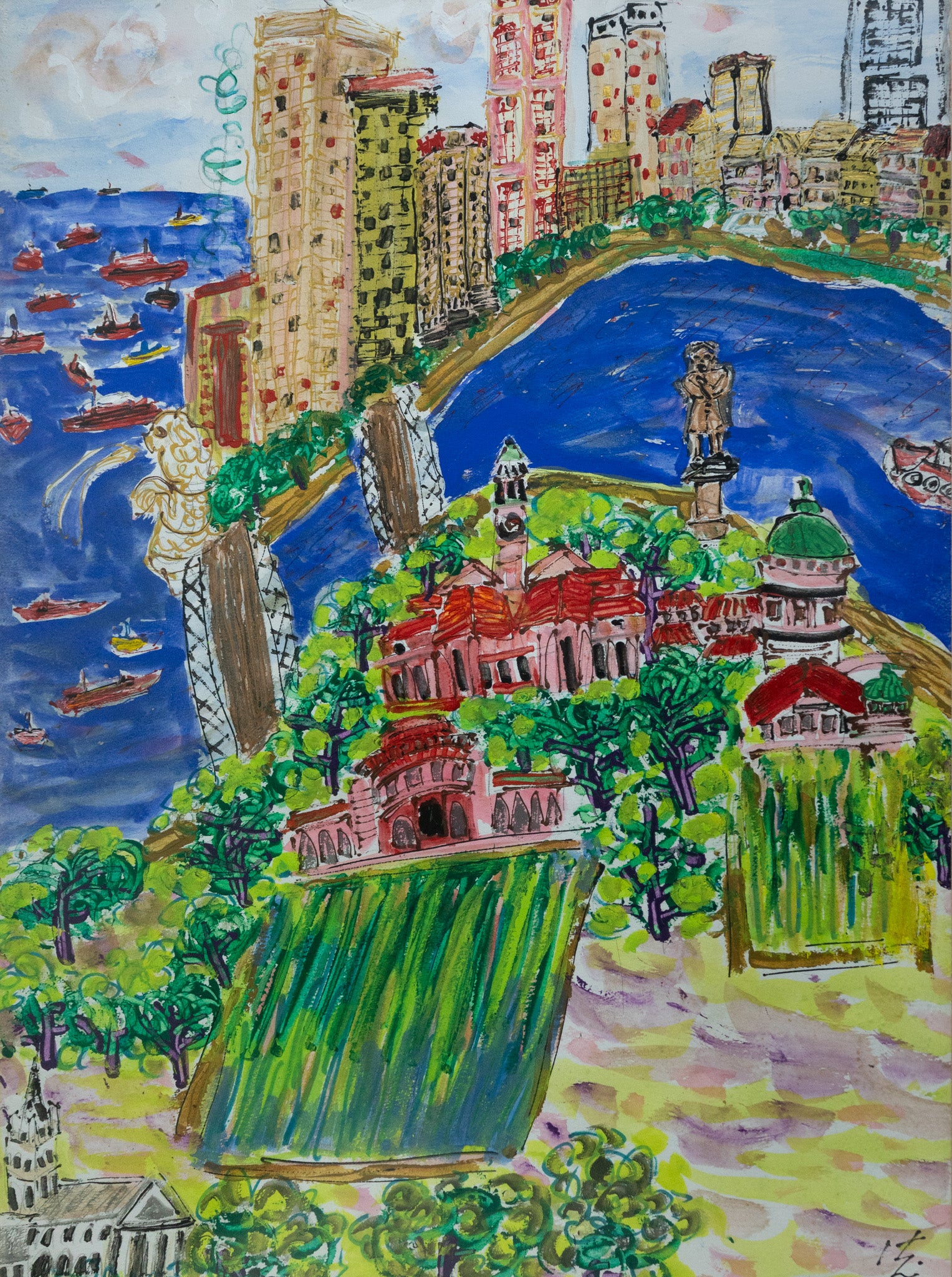
Dr. Earl Lu, Civic District, Undated
There is also the question of legacy. Motorsport careers are short, and drivers are acutely aware of time. Collecting art becomes a way of investing in objects that endure, of placing part of one’s identity in works that will continue to be encountered long after trophies are stored away. For Bernie Ecclestone, this took the form of building a collection of Impressionist and Modern masters that rivalled those of financiers and aristocrats. For Hamilton, the focus appears less on market dominance and more on aligning himself with cultural dialogues that will outlast his final lap.
Practical considerations play a role as well. Art can be stored and displayed without the constant upkeep of mechanical fleets. Its ecological footprint is different, often lighter, than that of maintaining rare cars. It creates opportunities for patronage, exhibition, and cultural engagement that a garage of Ferraris does not. To sell cars in order to fund art is to reallocate capital — away from mechanical spectacle, towards cultural currency. For athletes under permanent public scrutiny, it is also a way to reshape identity, moving from the image of excess towards that of a collector and patron engaged in cultural conversations.
Returning to Hamilton
Hamilton’s decision to sell his cars for art is therefore both symbolic and instructive. It exemplifies how athletes increasingly think about wealth, identity, and influence. Cars, no matter how glamorous, are depreciating assets; art holds value both in financial terms and in cultural capital.
For Hamilton, the decision also reflects shifting personal values [5]. Environmental concerns are central: fleets of rare cars are resource-intensive to own and maintain, while art has a lighter footprint once acquired. Practicality matters too: paintings require little upkeep compared with storage, servicing, and insurance costs tied to automotive collections. Over time, Hamilton has already scaled back his private ownership of cars and moved towards hybrid or electric vehicles for daily use.
Art, then, is not only an investment but also a statement of alignment with broader cultural and ecological commitments. For a man defined by speed, the choice to immerse himself in art marks a new kind of pursuit: one of legacy and presence.
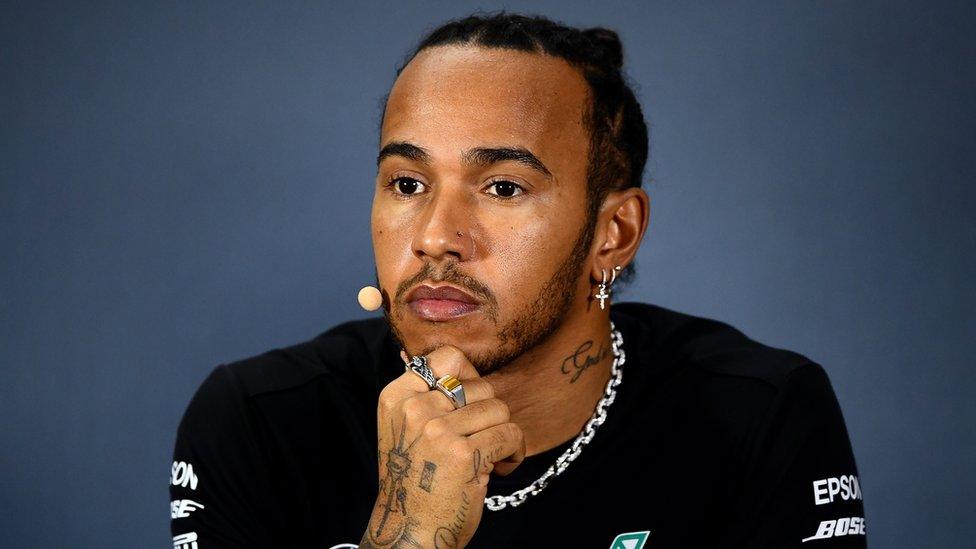
Lewis Hamilton. Image Courtesy of the BBC.
In Singapore, the race continues to light up Marina Bay. The spectacle is as dazzling as ever. Yet, off the track, the story is less about horsepower and more about human expression. Hamilton’s journey suggests that even in a sport defined by speed, there is room for stillness—for the contemplation of colour, form, and meaning.
Written by
Fithriah Hashim
-
Footnotes:
[1] A Japanese contemporary artist born in 1962, Murakami is renowned for blending traditional Japanese art with contemporary pop culture. He founded the "Superflat" movement, characterised by its flat planes and bright colours. His work spans various media, including painting, sculpture, and commercial collaborations with brands like Louis Vuitton and musicians such as Kanye West.
[2] Former Formula 1 driver and current Red Bull Racing advisor, Helmut Marko, owns several hotels in Graz, Austria, such as the Schlossberghotel and Lendhotel. These establishments integrate contemporary art into their design, showcasing over 100 artworks in the Lendhotel alone. Marko views art as an essential element of the guest experience, stating that displaying art in hotels makes it "semi-public" and can elicit strong emotional responses from guests.
[3] A British motorsport photographer, Sutton began his career in the 1970s and founded Sutton Motorsport Images in 1980. He is known for his extensive coverage of Formula 1 and has built one of the largest F1 photographic agencies in the world. Sutton has also collaborated with artists like Mark Dickens to create mixed-media works celebrating Formula 1 champions.
[4] Bernie Ecclestone, born in 1930, was the CEO of the Formula One Group from 1987 to 2017. Often referred to as the "F1 Supremo," he played a pivotal role in transforming Formula 1 into a global commercial powerhouse. Under his leadership, the sport expanded its reach and financial success, making him one of the most influential figures in motorsport history.
[5] Seven-time Formula 1 World Champion Lewis Hamilton is a vocal advocate for environmental sustainability. He has offset his carbon footprint from his racing career, adopted a plant-based diet, and reduced his travel emissions. Hamilton also founded the Hamilton Commission to promote diversity in motorsport and has used his platform to raise awareness about climate change and social issues.
|
If you enjoyed this blogpost, consider buying me a coffee. Please scan the QR code here >>
What is "buy me a coffee"? Buy Me a Coffee is a way for people to tip or say thank you to content creators and creatives.
Also you didn't ask but here're our preferred coffee orders:
|
 |
